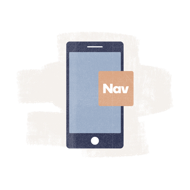Fringe benefits are a type of pay that an employee can get aside from a salary. It’s non-wage compensation that’s alongside their regular salary earnings. Fringe benefits can be part of a salary package or a group of benefits that coincide with wages.
For employers, fringe benefits can entice and keep top talent. The more benefits you offer, the more likely potential employees will look at your company as a desirable place to work.
For potential employees, you could negotiate different types of fringe benefits along with your salary. In case your salary isn’t as high as you’d like, you might be able to get hefty fringe benefits to make up for the compensation.
Examples of Fringe Benefits
Fringe benefits come in many forms, from having a company cell phone to covering the costs associated with getting a degree. Here are a few ways fringe benefits exist.
- Commuting assistance: Driving a company car or another vehicle to and from work and related events.
- Technology: Things like cell phones, computers, laptops and other gear to get your work done.
- Free snacks and meals: In-office lunches or a flexible spending account to cover out-of-office meals.
- Moving expenses: Getting covered if you have to move to do your job. This varies by company. Some have a limit on how much to spend on moving expenses, some will cover only packing and moving-related costs. Others will cover temporary housing until you can find something permanent.
- Health and wellness: Gym memberships, spa treatments, health insurance.
- Family assistance: Help covering adoption expenses, child care costs, dependent care assistance, life insurance, parental leave.
- Health savings accounts (HSAs): A savings account where contributions, earnings, and withdrawals are tax-free.
- 401(k)s: Matching retirement plan contributions.
- Stock options: Equity in a company.
- Educational resources: Tuition reimbursement, paying for continuing education courses, resource material or textbook coverage.
Taxable Fringe Benefits
If you’re a company looking to offer fringe benefits, keep in mind that anything you offer is taxable, according to the IRS, unless it’s excluded. It depends on who you’re offering the fringe benefits to. And some benefits are exempt from some taxes and not others.
The IRS says that if you provide a fringe benefit to your employee, it needs to be included in the employee’s pay unless the law excludes that benefit. If the person receiving the benefit is an employee, it’s usually subjected to employment taxes. But if the person getting the fringe benefit isn’t an employee, like a freelancer or contract worker, the benefit isn’t subjected to employment taxes.
How each benefit gets taxed is based on the benefit itself. A gift card might be taxed at its full value. Company cars might be taxed based on how many miles the employee drove last year multiplied by the standard mileage rate (it was 58 cents in 2019).
The way some fringe benefits get taxed has recently changed due to the Tax Cuts and Jobs Act. For example, companies that used to provide moving expenses for employees as a fringe benefit. While it used to be tax-free, now it’s considered taxable unless the employee is part of the armed services or on active duty.
How do I report taxable fringe benefits?
As an employer, you’ll determine the value of non-cash fringe benefits before Jan. 31 for the prior year. During the previous year, you’ll need to estimate the value to the best of your ability. Generally, you should have an idea of how much something is worth in order to withhold and deposit on time. If you underestimate the value of a benefit and deposit less than what you would’ve owed, there’s a chance you could face a penalty from the IRS.
When you report, you’ll have the chance to choose between reporting:
- Annually
- Semi-annually
- Quarterly
- Per pay period
- Or other
Keep in mind, though, that you can’t choose anything less frequently than annually. You can also change the period as often as you’d like within a calendar year, even for benefits that you’d like to split up. For example, if an employee was paid for a fringe benefit once, you can split up the reporting over many different periods without alerting the IRS.
When you report, you’ll add the value of the fringe benefit to the regular wages during the pay period or whatever period you choose. You’ll then figure out the income tax on the total amount.
You also have the option to withhold federal income tax on the value of fringe benefits. In this case, it’s considered supplemental wages, so it’d be taxed at the flat 22%. Other benefits, like Medicare and Social Security, must be taxed accordingly as well.
Non-taxable Fringe Benefits
Some benefits aren’t subjected to income tax, Social Security and Medicare tax, or federal unemployment tax. Some are taxed for one but not others. For example, adoption assistance is exempt from income tax but is taxable for federal unemployment and Social Security and Medicare.
Other exemptions include:
-
- Accident and health benefits: Exempt from income tax (except long-term care benefits), federal unemployment tax, and exempt from Social Security and Medicare (unless you’re an S-Corp).
- Achievement awards: Up to $1,600 for qualified plan awards are exempt from all three taxes.
- Adoption assistance: Exempt from income tax.
- Athletic facilities: Exempt.
- De minimis (minimal) benefits: Exempt.
- Dependent care assistance: Exempt up to certain limits, $5,000.
- Educational assistance: Exempt up to $5,250 of benefits each year.
- Employee discounts: Exempt up to certain limits.
- Employee stock options: In some instances, but there are rules.
- Cell phones provided by employer: Exempt if provided primarily for non-compensatory business purposes.
- Group-term life insurance coverage: Exempt.
- Health savings accounts (HSAs): Exempt up to the qualifying limits.
- Lodging on your business premises: Exempt and must be a condition of employment.
- Meals: Exempt.
- No-additional-cost services: Exempt.
- Retirement planning services: Exempt.
- Transportation/commuting benefits: Exempt up to certain limits.
- Tuition reduction: Exempt.
- Working condition benefits: Exempt.
While many exemptions exist, there are some rules that are in place. For instance, retirement planning services are exempt but it doesn’t apply for tax preparation, accounting, legal or brokerage services.
Are Businesses Required to Offer Fringe Benefits to Employees?
Some fringe benefits are required by law to give to your employees, but not all of them. Since fringe benefits are all-encompassing of many different types of benefits, some are necessary and some are nice to have.
For instance, if your company employs 50 workers or more, you’re required to provide health insurance. Also, if you have that many workers, you’re required to provide family and medical leave (FMLA). Employees who have been at the company for at least a year are entitled to at least 12 weeks of unpaid, job-protected leave for family or medical reasons.
If you’ve ever had to serve on a jury, your employer is required to provide you job-protected unpaid time off to perform civic duties, like jury duty. Other required fringe benefits include:
- COBRA insurance
- Unemployment insurance
- Workers’ compensation
- Medicare and Social Security tax
The rest, like stock options and paid time off (PTO) aren’t required benefits.
Why Should Businesses Consider Offering Fringe Benefits?
Even though many fringe benefits aren’t required by law to offer employees, many of them attract some of the best talent available. The more incentives you offer, the more likely you’ll find strong, dedicated workers to hire for your business.
You might not have the budget to offer meal plans or tuition reimbursement, but consider offering as much as you can to find reputable employees. For example, if you already offer health insurance to your workers, consider adding dental and vision. Or instead of just workers, see if there are plans available to your employee’s family and dependents.
There are some benefits that many workers are interested more than others, like:
- Employer-matched 401(k): Having your employer not only have a 401(k) plan available, but have a matching component as well, is a big draw for workers who appreciate the retirement savings boost.
- Remote/work-from-home options: Commuting to work can get tiring and extend the workday for many employees. Having some time to work from home for any reason at all is enticing to workers. Some companies are fully remote.
- Educational resources: If you have workers that participate in continuing education, get certifications, or complete a degree, see if you can pay for some or all of it. Their hard work only helps them become better workers for you.
Final Word: Fringe Benefits
Offering fringe benefits isn’t a requirement for your business, but it might be the right move. Some of the best workers are attracted to lucrative benefits. The more benefits you offer, the more you might find strong, skilled workers.
But make sure what you’re offering is within your budget. It’s a good idea to offer what you can, and if possible, grow incentives as your company grows. Find out how you can start offering benefits or increase the benefits you offer by talking to a financial advisor or accountant that works with businesses.
This article was originally written on January 10, 2020.



Have at it! We'd love to hear from you and encourage a lively discussion among our users. Please help us keep our site clean and protect yourself. Refrain from posting overtly promotional content, and avoid disclosing personal information such as bank account or phone numbers.
Reviews Disclosure: The responses below are not provided or commissioned by the credit card, financing and service companies that appear on this site. Responses have not been reviewed, approved or otherwise endorsed by the credit card, financing and service companies and it is not their responsibility to ensure all posts and/or questions are answered.